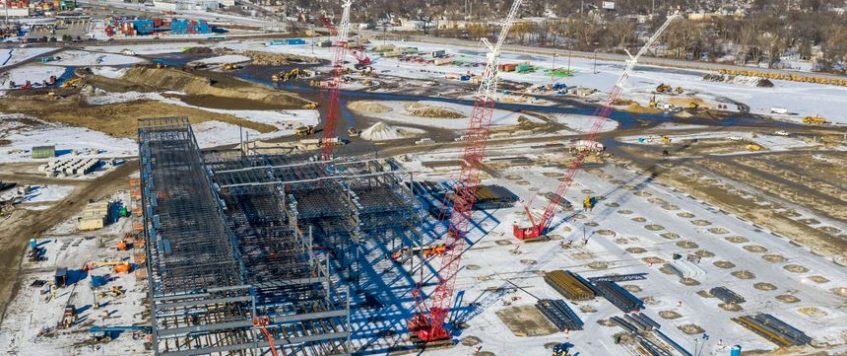-
04
Apr
Warehouses Find Insulation From U.S. Banking Crisis
Industrial real-estate executives expect only limited fallout from the turmoil that has engulfed the U.S. banking sector, even as warehouse developers grapple with the rising interest rates and weakening demand that are dampening construction following a period of historic growth.
“The availability of credit might likely be diminished in the short term as banks will begin to be more stringent on underwriting,” said Craig Meyer, president of industrial for the Americas at real-estate services firm JLL. He said he expects new projects this year will “be down as a result of some of these couple of financial issues, the increasing cost of capital and then the availability of capital.”
The failures of Silicon Valley Bank and Signature Bank earlier this month set off fears that customers would pull deposits from U.S. regional banks. Many small and regional lenders are also under pressure as a record amount of commercial mortgages are set to expire this year. Smaller banks hold about $2.3 trillion in commercial real-estate debt, according to an analysis by data firm Trepp Inc.
Industrial properties are largely insulated from the impact, at least for now, because warehouses aren’t facing the same pressures as commercial office space, real-estate executives said.
The commercial market has been weakened by the remote and hybrid working arrangements of the Covid-19 pandemic that have left office buildings sparsely populated. But companies are continuing to lease distribution centers, even though demand growth has slowed, and vacancy rates for industrial properties remain near historic lows.
Industrial real estate is “driven by the movement of goods,” which is continuing, Mr. Meyer said.
Financial stresses in the broader economy have been coursing through the real-estate sector since last year, with costs of construction materials and labor rising and borrowing costs edging upward as the Federal Reserve has raised interest rates to tame inflation. That has helped rein in a boom in warehouse expansion that saw the business add nearly 1.4 billion square feet of logistics space across the U.S. from 2019 through 2022, according to data from JLL.
The costs have been rising as the surge in e-commerce activity driven by the pandemic has slowed, draining some of the urgency from warehouse leasing. About 633 million square feet of new space was under construction in the fourth quarter of 2022, down from about 634 million the previous quarter, in the first decrease since the third quarter of 2020, according to JLL.
Average construction-materials prices rose 16% last year over 2021, according to JLL’s construction outlook for 2023 released Thursday, although the materials prices declined in the second half of the year. Wages for building construction labor and specialty trades rose 6.5% last year compared with the prior year, which JLL said was slightly above inflation for that period.
Rebecca Rockey, global head of economic analysis and forecasting at commercial real-estate services firm Cushman & Wakefield, said lending was already tightening significantly and fewer properties were selling this year before the bank failures raised worries about a deeper banking crisis. She said she expects the banking crisis will have only a marginal impact on the industrial sector, however.
The number of industrial-property sales fell 55% in the first two months of 2023 from the same period last year, according to data firm MSCI Real Capital Analytics.
That was because “it was just harder to get financing in an environment where there’s higher interest rates, there’s uncertainty around the interest rate outlook and so on and so forth,” Ms. Rockey said.
Retailers more recently have slowed expansion of their logistics operations as growth in online shopping has declined and consumer spending shifts toward services from goods. Still, warehouse space remains tight and there are tenants searching for space, helping insulate the sector from the concerns over banking in other property sectors, Mr. Meyer of JLL said.
Asking rents for industrial space are still rising despite the pullback in leasing. The asking rental rate rose to $8.81 per square foot in the fourth quarter, up 1% from the prior quarter and up 18.6% from the year-ago period, the highest annual rate of rent growth on record, according to Cushman & Wakefield.
Rising rents for industrial space could help the projects pencil out for developers facing increasing costs, Mr. Meyer said.
“If you have rental rates rising, you’re hopeful that your new project at your new level of rent rates you might get will compensate you or cover increased financing costs,” he said.
By: Liz Young / Wall Street Journal

